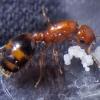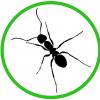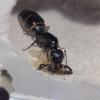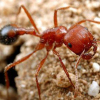From my experience:
Back during September 2020 I started my first 3 (now 2) queen P. californicus colony with 4 workers. I removed them from tt setup immediately and put them in a THA Mini Hearth XL. I provided heat, a variety of seeds, occasional insects, and sometimes (more so rarely) sugar water. I kept a journal documenting my observations such as what seeds and insect they favor as well as major events. They ended up attacking 1 queen, though expected, and I managed to separate her into a separate tt and gave her a pupae, food, heat, etc. I always keep to a routine, check on them at a specific time, don't bother them too much, feed insects once a week, always have water and seeds available, try to keep everything as sterile and sanitary as I can, etc.. It's all about discipline and routine for me.
The 1 queen laid eggs, some of which are starting to turn into larvae. As soon as they eclose to workers I will again put them in a THA nest.
The 2 queen colony most likely have more than 50 workers (eyeballing). I wouldn't be surprised if it has 100 (if I took a picture and counted).
My observations on seeds and insects:
All seeds and insects are organic, no pesticides, no additives, and not wild gathered/caught. They are listed in the order of most favored:
Seeds:
- Kentucky Blue Grass
- Poppy Seeds
- Sun Flower Seeds
- Hemp Seeds (though I try to avoid this now because it gets messy)
Insects:
- Red Runners
- Wingless Fruit Flies
- Crickets
- Dubia Roaches (I try not to use this anymore because it gets too hard for them, unless you have one that is freshly molted)
- Meal Worms (tried it once, they weren't a big fan)
Hope this helps. Let me know if you have specific questions.


















